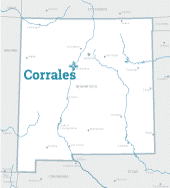The Long History of Turquoise
Turquoise stones have a long association with Native American Indians. Originally called the Turkish stone by the crusaders, turquoise was long used and mined in China and Tibet. It has also been associated with the Anasazi American Indians from thousands of years ago to today’s Native American Indians. Turquoise was also found to be used by the Incas and Aztecs of Mexico into South America. The color captivated these early people, and continues to do so today. The Zuni Pueblo people credited the sky blue color as male from the heavens, and the green colors as female coming from mother earth. Turquoise is the birth stone of December and is said to enhance the good things in your life.
What It’s Made Of
Turquoise is a hydrated copper aluminum phosphate with the ingredients of copper, aluminum and phosphorous, creating a blue color. Zinc, iron or chromium are minerals which also may be present. Turquoise consisting of a higher iron content tends to contribute to a more greenish colored stone. The presence of zinc tends to give the turquoise a yellow tint. Found in veins, the color of turquoise can vary from one area of a deposit to another area. Due to the change of minerals, the same mine can and does provide more than one color. This makes it difficult to absolutely identify a mine origin entirely by the color of the stones. Turquoise is created as water percolates through the above mineral bearing rocks, and settles in and fills the voids in those stones. These rocks create what is commonly known as the matrix found in Turquoise.
The manner in which the way the stone is cut largely determines how the matrix and turquoise will be configured or displayed on the finished stone. The stones found deeper in the ground are generally not as hard as the stones found closer to the surface. The stone hardness can be a MOH value of 2 to 6 (1 being the softest to 10 being the hardest) which is not quite as hard as window glass. The harder the stone the less porous it will be. Due to its inherent porosity, turquoise can be discolored by detergents and oils, even skin oil. Some treatments altering and/or enhancing the color and hardness of turquoise have been used for thousands of years due to this characteristic.
Naturally Rare
It is estimated that only about 10-12% of turquoise is hard enough to be considered gem quality and is not treated in any way. Some of these stones do not change colors, although because of varying hardness, some might change generally to a more greenish color. These natural stones are much more difficult to find and thus command a premium price.
Old Treatment Methods
One of the oldest methods to treat Turquoise was to rub the stones with various types of oils or wax. This “old school” method works to add a protective layer and brighten the color of the stone. It is common to spray rough cut turquoise with water to see its real color. These oil and wax methods are designed to mimic the natural look of the wet stone. It should be noted that these common methods do wear out over time. Treating the stone with wax is more effective and longer lasting than those associated with using oils. Older, worn stones will eventually exhibit a patina resulting from the body oils of its wearer being absorbed.
Other Methods of Treatment
Stabilized stones have had exposure to epoxy and resins that seals the pores and generally retards the ability of the stones to absorb detergents and oils and thus change color. These are real stones that are now protected. If a plastic is included the stones might have a more ‘glassy’ look. Pressure might also be applied to drive the application deeper into the stone.
Enhanced Turquoise hasn’t had the pores filled but is treated with electricity and added potassium to give it an improved color and luster. This treatment is virtually undetectable to the look of completely natural stones and is used for higher quality stones.
Color injected stones have had a dye added for color enhancement and also to darken the matrix for a more vivid contrast to the stone color. This method is used for lesser quality stones and can have an unnatural look to an experienced eye.
Reconstituted Turquoise is generally lower quality grade of stone that is ground to a powder and then mixed with color dye and a binding agent and cured into slabs that are then cut into stones. This is real Turquoise but is not generally used for higher quality jewelry.
Block stone is entirely imitation and has no Turquoise whatsoever. It is mostly a plastic imitation that can have iron pyrite added and swirled to imitate matrix. This plastic is then formed and made into slabs that are then cut to size and shape. There is no real value to this ‘stone.
One should always make informed decisions of what they purchase. SilverTQ, LLC only markets and sells high-grade natural or carefully chosen stabilized turquoise that can be enjoyed and marveled at for many years to come.


30% OFF SITE-WIDE SPRING SALE!
FREE US SHIPPING!
USE COUPON CODE: SPRING24
ALL PENDING ORDERS TO SHIP MAY 15th